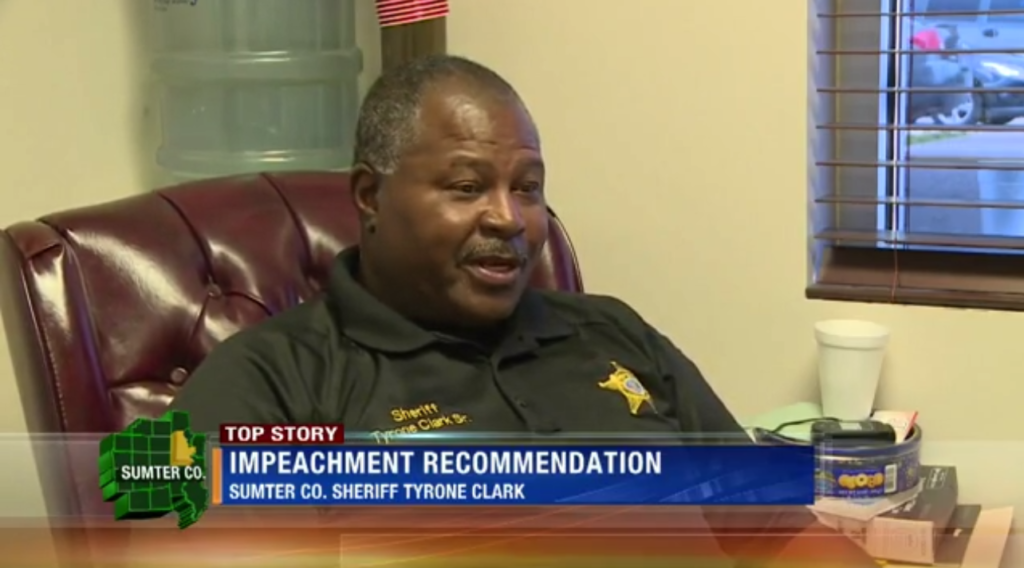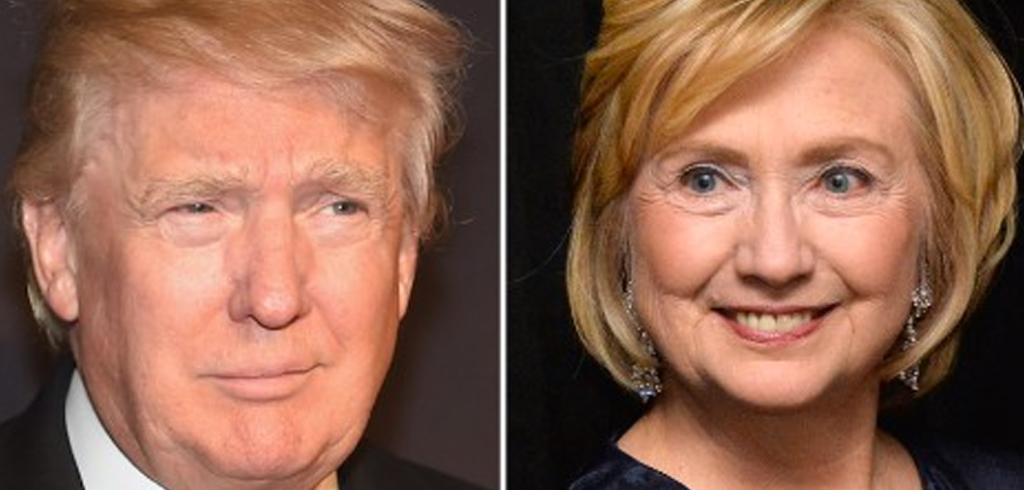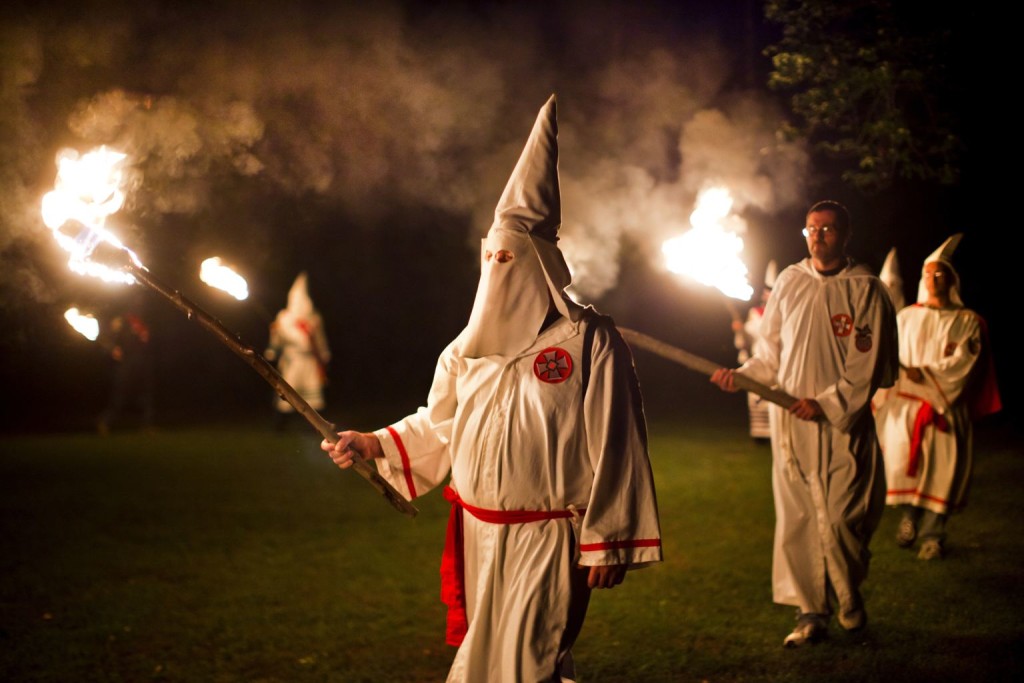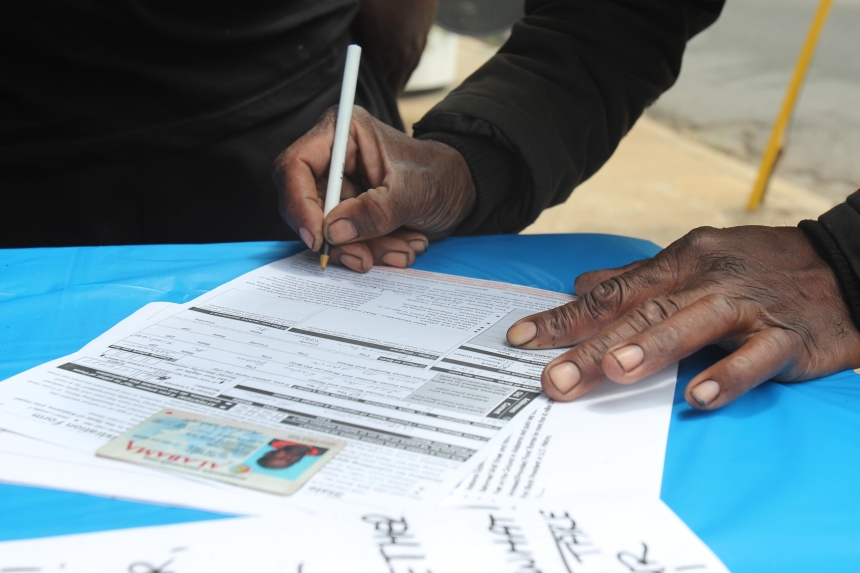Pentagon revokes controversial transgender ban for U.S. military

Defense Secretary Ash Carter on Thursday removed one of the final remaining barriers to military service by lifting the Pentagon’s ban on openly transgender people serving in the U.S. military. “Effective immediately, transgender Americans may serve openly,” Carter said at a news conference. “They can no longer be discharged or otherwise separated from the military just for being transgender.” Carter continued, “Our mission is to defend this country, and we don’t want barriers unrelated to a person’s qualification to serve preventing us from recruiting or retaining the soldier, sailor, airman or Marine who can best accomplish the mission. We have to have access to 100 percent of America’s population for our all-volunteer force to be able to recruit from among them the most highly qualified — and to retain them.” Alabama 1st District U.S. Rep. Bradley Byrne, a member of the House Armed Services Committee, was quick to weigh in on the Pentagon’s decision. “It is frustrating the Pentagon now has a strategy for transgender service members, but they still lack an actual strategy for defeating radical Islamic terrorism,” said Byrne in a news release. “Once again it seems the Obama Administration is more interested in advancing a political agenda than they are in proposing sound policy.” According to Carter, within 90 days the Pentagon will create a guidebook for commanders on rules regarding transgender service members as well as medical guidance to doctors. Within one year, transgender individuals will be allowed to join the armed forces, provided they have been “stable” in their preferred gender for 18 months, he continued. Lifting the transgender ban was the latest move in a series of controversial cultural changes in the military in recent years — from the 2011 decision to end the “Don’t Ask, Don’t Tell” policy barring gays and lesbians from serving openly, to Carter’s December 2015 decision lifting restrictions on women serving in combat roles. Many critics have called Wednesday’s decision “social engineering” that risks troop readiness and the ability to fight. Family Research Council President Tony Perkins, a Marine Corps veteran, said President Barack Obama was using the military “to fight culture wars.” “This is yet another example of President Obama using America’s military to fight culture wars instead of to fight real wars against the enemies of our nation,” Perkins said in a prepared statement. “Considering the abysmal condition of our military and a decline in readiness, why is this a top priority for the Obama administration?” Perkins continued. “Before changing any policy, the impact on military readiness has to be the first consideration. Defense Secretary Carter has failed to explain how this new policy makes our military more capable of winning wars.” Rep. Byrne shares Perkins’ concern over troop readiness. “As a member of the House Armed Services Committee, I am committed to holding the Obama Administration accountable and ensuring their political agenda does not directly harm our military readiness,” Byrne concluded.
Alabama sheriff faces impeachment in corruption probe

Alabama’s Attorney General has started impeachment proceedings against a sheriff accused of corruption and neglect of duty. Sheriff Tyrone Clark Sr. is accused of helping an inmate with an extensive history of drug offenses to bring contraband into the Sumter County jail. Other allegations include taking pay from inmates in an unauthorized work-release program and trying to coerce a female employee into sex. A grand jury recommended removing Clark from office in April and sent the case to Attorney General Luther Strange, who announced Thursday that the Alabama Supreme Court will decide Clark’s fate. Any criminal charges would be considered separately; District Attorney Greg Griggers says an investigation continues. Clark has not returned phone calls or emails, and it’s unclear if he has an attorney. Republished with permission of The Associated Press.
Alabamians gave Hillary Clinton their votes and their dollars, but to Donald Trump only votes

Hillary Clinton won the Alabama Democratic Primary back in March by a whopping 77.8% over rival Bernie Sanders, and the dollars have flowed accordingly. To date, Clinton has taken in $658,565 from Alabamians supporting her in the 2016 cycle. Meanwhile, despite winning the state’s GOP primary, presumptive Republican nominee Donald Trump has yet to see votes translate to donations like the Clinton camp. Alabamians have only sent $50,263 to his campaign this cycle. Just 2.13% of total GOP donations according to the latest campaign finance numbers. What’s more is Trump’s main Alabama primary opponent, Ted Cruz, who took home a paltry 21.1% of the vote compared to Trump’s 43.4%, has raked in $718,226 from 7,960 donors across the state. Trump only has 219 Alabama donors — 36 times fewer donors than Cruz. The numbers, from the Federal Election Commission, show that all candidates who were in the field at some point in the race, Republicans and Democratic, have gathered a total of $3.2 million from the Yellowhammer State. While Clinton has handily taken in more donations than Trump, she’s also worked a lot harder for them. Unlike his contemporaries, the billionaire businessman has yet to actively solicit dollars, which may explain his low intake amounts. The good news for Trump? While the former First Lady may have a lot of more cash in her coffer coming from the Yellowhammer State, Trump’s averaging larger checks per Alabamian — $229.51 to $146.18. Republicans: $2,351,447 Ted Cruz: $718,226 Ben Carson: $569,388 Marco Rubio: $444,669 Jeb Bush: $270,599 Mike Huckabee: $83,617 Rand Paul: $55,735 Scott Walker: $54,906 John Kasich: $53,983 Donald Trump: $50,263 Carly Fiorina: $31,294 Rick Santorum: $10,908 Chris Christie: $3,645 Bobby Jindal: $2,759 Lindsey Graham: $855 Rick Perry: $600 Democrats: $938,963 Hillary Clinton: $658,565 Bernie Sanders: $275,858 Martin O’Malley: $2,891 Larry Lessig: $1,000 Jim Webb: $650
Hillary Clinton raising big dollars at tiny fundraisers

A single elevator could have accommodated the donors who recently gathered with Hillary Clinton at home of the Pritzker family in Chicago’s Gold Coast neighborhood. Small in number, the group was big in largesse, contributing at least $1 million to help elect her and other Democrats this fall. To raise that much money, it would have taken a 37,000-seat stadium of Bernie Sanders fans each chipping in the campaign’s self-described average donation of $27. In her quest for the White House, Clinton is using every fundraising technique at her disposal, including intimate salon-style gatherings with elite donors. Together with small-donor efforts such as email marketing and happy hours for young professionals, these events are helping Clinton collect as much as $1 billion to battle presumptive Republican nominee Donald Trump. The mini-fundraisers have landed big money: At least $19.5 million has flowed from 16 of them over the past two months, according to an Associated Press review. But they also may open her up to criticism. Like her Democratic opponent Sanders, presumptive Republican nominee Donald Trump eagerly depicts Clinton as bought and paid for by her wealthy contributors. “The people who rigged the system are supporting Hillary Clinton because they know as long as she is in charge nothing’s going to change,” Trump told employees of an aluminum scrap metal factory in a speech on Tuesday. And as Clinton works to win over liberals in her party after a divisive primary, the events may undercut her argument that she would be a strong proponent of campaign finance reform. Clinton says Democrats cannot unilaterally disarm in the midst of a tough presidential election, but once in the White House she’d work to reduce big money in politics — a line President Barack Obama also used. Both Clinton and Trump can solicit checks of $350,000 or more from a single donor thanks in part to a Supreme Court ruling that lifted an overall per-person cap on political contributions. That’s roughly triple what the individual donor limit was in 2012. The resulting money flow could help the presidential candidates build robust on-the-ground voter contact and turnout operations, as well as pay for costly advertising. That’s in addition to what’s available on the super PAC side: those groups, which cannot directly coordinate their spending with the candidates, face no contributions limits whatsoever. Clinton has made high-dollar fundraisers a staple of her campaign financing plan, frequently pairing a small pricey event with a far larger one that has a much lower entry fee. It’s a version of what Obama did in 2012, when he held small roundtables with big donors, often just a few blocks from the White House at the Jefferson Hotel. In addition to the 10-person Monday night confab at the home of J.B. and M.K. Pritzker — some of the heirs to the Hyatt hotel fortune — Clinton has held at least nine other events with 15 or fewer donors, according to AP’s review. On Wednesday, the candidate mingled with 15 donors at trendy San Francisco brunch spot Boulettes Larder. Other top-tier fundraisers include a 15-person gathering in late May at the sprawling Portola Valley, California, home of former eBay chief executive John Donahoe, and a double-header two weeks earlier in posh New York City residences. On that date, Clinton scooped up at least $1.5 million for Democratic efforts at financier Steven Rattner‘s home and then headed to longtime friend Lynn Forester de Rothschild‘s place to double the night’s haul. Donors at those events typically were asked to give at least $100,000 to the Hillary Victory Fund. Clinton also has entertained 50 or fewer donors at six more events where the minimum contribution generally was $33,400. The campaigns can accept only $2,700 per donor for each election, but a victory fund allows candidates to ask for more and then parcel out the money to the campaign, national political party and dozens of state parties. Both Trump and Clinton have set up these kinds of accounts. “When a candidate takes that much money, they become dependent on those donors and cannot afford to act against their wishes,” said Josh Silver, director of Represent.us, a group working to reduce the influence of money in politics through state-level public financing measures. “This is exactly why Democrats and Republicans are falling short on the public interest demands of their constituents, and it has a lot to do with the remarkable popularity of Bernie Sanders.” Even while it rakes in big cash, the Clinton campaign has emphasized its efforts to appeal to the kinds of small donors that fueled Sanders’ insurgent candidacy. Clinton’s campaign also has tried to give some small donors big-donor-level access by holding raffles for private dinners with her. The AP was able to conduct its review of Clinton’s fundraisers because her campaign makes public background information about its finance events. Trump’s campaign does not. Trump associates say he has held several small gatherings with bigger donors, including during a May swing through California. Republished with permission of The Associated Press.
Ku Klux Klan dreams of rising again 150 years after founding

Born in the ashes of the smoldering South after the Civil War, the Ku Klux Klan died and was reborn before losing the fight against civil rights in the 1960s. Membership dwindled, a unified group fractured, and one-time members went to prison for a string of murderous attacks against blacks. Many assumed the group was dead, a white-robed ghost of hate and violence. Yet today, the KKK is still alive and dreams of restoring itself to what it once was: an invisible empire spreading its tentacles throughout society. As it marks 150 years of existence, the Klan is trying to reshape itself for a new era. Klan members still gather by the dozens under starry Southern skies to set fire to crosses in the dead of night, and KKK leaflets have shown up in suburban neighborhoods from the Deep South to the Northeast in recent months. Perhaps most unwelcome to opponents, some independent Klan organizations say they are merging with larger groups to build strength. “We will work on a unified Klan and/or alliance this summer,” said Brent Waller, imperial wizard of the United Dixie White Knights in Mississippi. In a series of interviews with The Associated Press, Klan leaders said they feel that U.S. politics are going their way, as a nationalist, us-against-them mentality deepens across the nation. Stopping or limiting immigration — a desire of the Klan dating back to the 1920s — is more of a cause than ever. And leaders say membership has gone up at the twilight of President Barack Obama‘s second term in office, though few would provide numbers. Joining the Klan is as easy as filling out an online form — provided you’re white and Christian. Members can visit an online store to buy one of the Klan’s trademark white cotton robes for $145, though many splurge on the $165 satin version. While the Klan has terrorized minorities during much of the last century, its leaders now present a public front that is more virulent than violent. Leaders from several different Klan groups all said they have rules against violence aside from self-defense, and even opponents agree the KKK has toned itself down after a string of members went to prison years after the fact for deadly arson attacks, beatings, bombings and shootings. “While today’s Klan has still been involved in atrocities, there is no way it is as violent as the Klan of the ’60s,” said Mark Potok of the Southern Poverty Law Center, an advocacy group that tracks activity by groups it considers extremist. “That does not mean it is some benign group that does not engage in political violence,” he added. Historian David Cunningham, author of “Klansville, U.S.A.: The Rise and Fall of the Civil Rights-Era Ku Klux Klan,” notes that while the Klan generally doesn’t openly advocate violence, “I do think we have the sort of ‘other’ model of violence, which is creating a culture that supports the commission of violence in the name of these ideas.” Klan leaders told the AP that most of today’s groups remain small and operate independently, kept apart by disagreements over such issues as whether to associate with neo-Nazis, hold public rallies or wear the KKK’s trademark robes in colors other than white. So-called “traditional” Klan groups avoid public displays and practice rituals dating back a century; others post web videos dedicated to preaching against racial diversity and warning of a coming “white genocide.” Women are voting members in some groups, but not in others. Some leaders will not speak openly with the media but others do, articulating ambitious plans that include quietly building political strength. Some groups hold annual conventions, just like civic clubs. Members gather in meeting rooms to discuss strategies that include electing Klan members to local political offices and recruiting new blood through the internet. It’s impossible to say how many members the Klan counts today since groups don’t reveal that information, but leaders claim adherents in the thousands among scores of local groups called Klaverns. Waller said his group is growing, as did Chris Barker, imperial wizard of the Loyal White Knights of the Ku Klux Klan in Eden, North Carolina. “Most Klan groups I talk to could hold a meeting in the bathroom in McDonald’s,” Barker said. As for his Klavern, he said, “Right now, I’m close to 3,800 members in my group alone.” The Anti-Defamation League, the Jewish protection group that monitors Klan activity, describes Barker’s Loyal White Knights as the most active Klan group today, but estimates it has no more than 200 members total. The ADL puts total Klan membership nationwide at around 3,000. The Alabama-based SPLC says there’s no evidence the Klan is returning to the strength of its heyday. It estimates the Klan has about 190 chapters nationally with no more than 6,000 members total, which would be a mere shadow of its estimated 2 million to 5 million members in the 1920s. “The idea of unifying the Klan like it was in the ’20s is a persistent dream of the Klan, but it’s not happening,” Potok said. Formed just months after the end of the Civil War by six former Confederate officers in Pulaski, Tennessee, the Klan originally seemed more like a college fraternity with ceremonial robes and odd titles for its officers. But soon, freed blacks were being terrorized, and the Klan was blamed. Hundreds of people were assaulted or killed within the span of a few years as whites tried to regain control of the defeated Confederacy. Congress effectively outlawed the Klan in 1871, leading to martial law in some places and thousands of arrests, and the group died. The Klan seemed relegated to history until World War I, when it was resurrected. It grew as waves of immigrants arrived aboard ships from Europe and elsewhere, and grew more as the NAACP challenged Jim Crow laws in the South in the 1920s. Millions joined, including community leaders like bankers and lawyers. That momentum declined, and best estimates place
Judge OKs Alabama voter registration rules for now

Residents of Kansas, Georgia and Alabama will have to prove they are U.S. citizens when registering to vote for federal elections using a national form, a judge ruled Wednesday. U.S. District Judge Richard Leon sided against a coalition of voting rights groups that sued a U.S. elections official who changed the proof-of-citizenship requirements on the federal registration form at the request of the three states and without public notice. Residents of other states only need to swear that they are citizens, not show proof. The judge refused to issue a temporary injunction sought by voting rights advocates to overturn the move by Brian Newby, the executive director of the U.S. Election Assistance Commission, until the case can be decided on its merits at trial. No trial date has been set yet, but lawyers for the voting rights groups have previously indicated that if their request was denied, they’d file an appeal before the November elections. Newby took the top job in November at a government agency entrusted with making voting more accessible, and then months later used the federal position to implement the obstacle to voter registration in three states. Fewer than 1 percent of voters in Kansas use the federal form to register. Alabama and Georgia are not currently enforcing their proof-of-citizenship laws. The judge called the breadth of the preliminary injunction that was sought “truly astonishing,” saying the groups are asking the court to void Newby’s actions, order the EAC to reverse the changes he made to the federal form and withdraw Newby’s letters granting the states’ requests. “These demands are dramatized all the more by the fact the United States Department of Justice has somehow decided to consent to such remarkable relief!” Leon wrote. He also called it “a thinly veiled request” for what’s normally accorded in a final judgment. “While we are disappointed in today’s decision, we will appeal to protect the critical rights of voters in these three states, especially during this election year,” said Chris Carson, president of the League of Women Voters of the United States. Kansas Secretary of State Kris Kobach, who intervened in the lawsuit on Newby’s behalf, did not immediately respond to an email or phone messages. The U.S. Supreme Court has said that states must accept and use the federal voter registration form, and an appeals court ruled in 2014 in a lawsuit filed by Kobach that states could not force the commission to require residents to provide proof-of-citizenship documents on the national form. “Despite this setback, we are confident in the strength of our case,” said Wendy Weiser, director of the Brennan Center’s Democracy Program. The government has already conceded in an earlier court filing that Newby and his agency likely cannot win the lawsuit on its merits because Newby never determined, as required by the National Voter Registration Act, that the documents were “necessary” to determine the eligibility of voters. The government noted that Congress considered and specifically rejected requiring proof-of-citizenship documents when registering to vote. Leon said that “what lies at the heart of this case are the scope of the authority and the legality of the actions of an independent federal agency that is represented here by Executive Branch counsel who, for the most part, decline to defend it.” Newby contends he had the administrative authority to grant the request from the three states to add the documentary proof of citizenship requirements on the federal registration form used for their residents. But voting rights advocates were stunned by Newby’s February action, saying it flies in the face of the commission’s mission to provide a simple, easy form to encourage voter registration. The groups argue the proof-of-citizenship requirements hurt their ability to conduct voter registration drives and deprive eligible voters of the right to vote in federal elections. The little-known commission was created in 2002 to help prevent a repeat of the disputed 2000 presidential election between George W. Bush and Al Gore following voting chaos in the crucial state of Florida. Among the commission’s duties is oversight of the national voter registration form. The federal body is supposed to have two Republican and two Democratic commissioners but has only one Democrat now because of a vacancy. Newby is a former Kansas election official who was appointed to his state job by Kobach. As a Kansas official, Newby had publicly supported the state’s efforts to modify the federal form. Republished with permission of The Associated Press.


